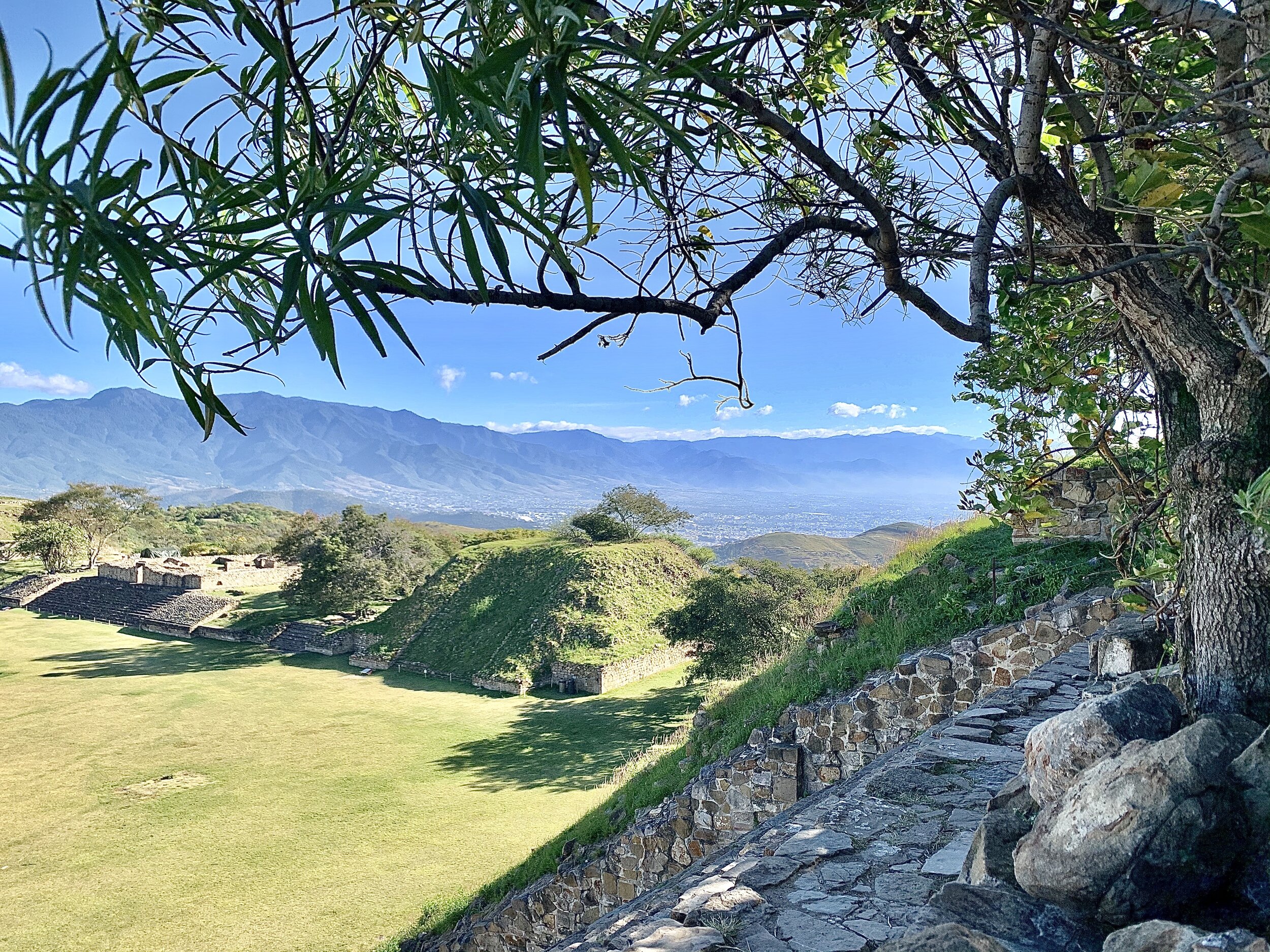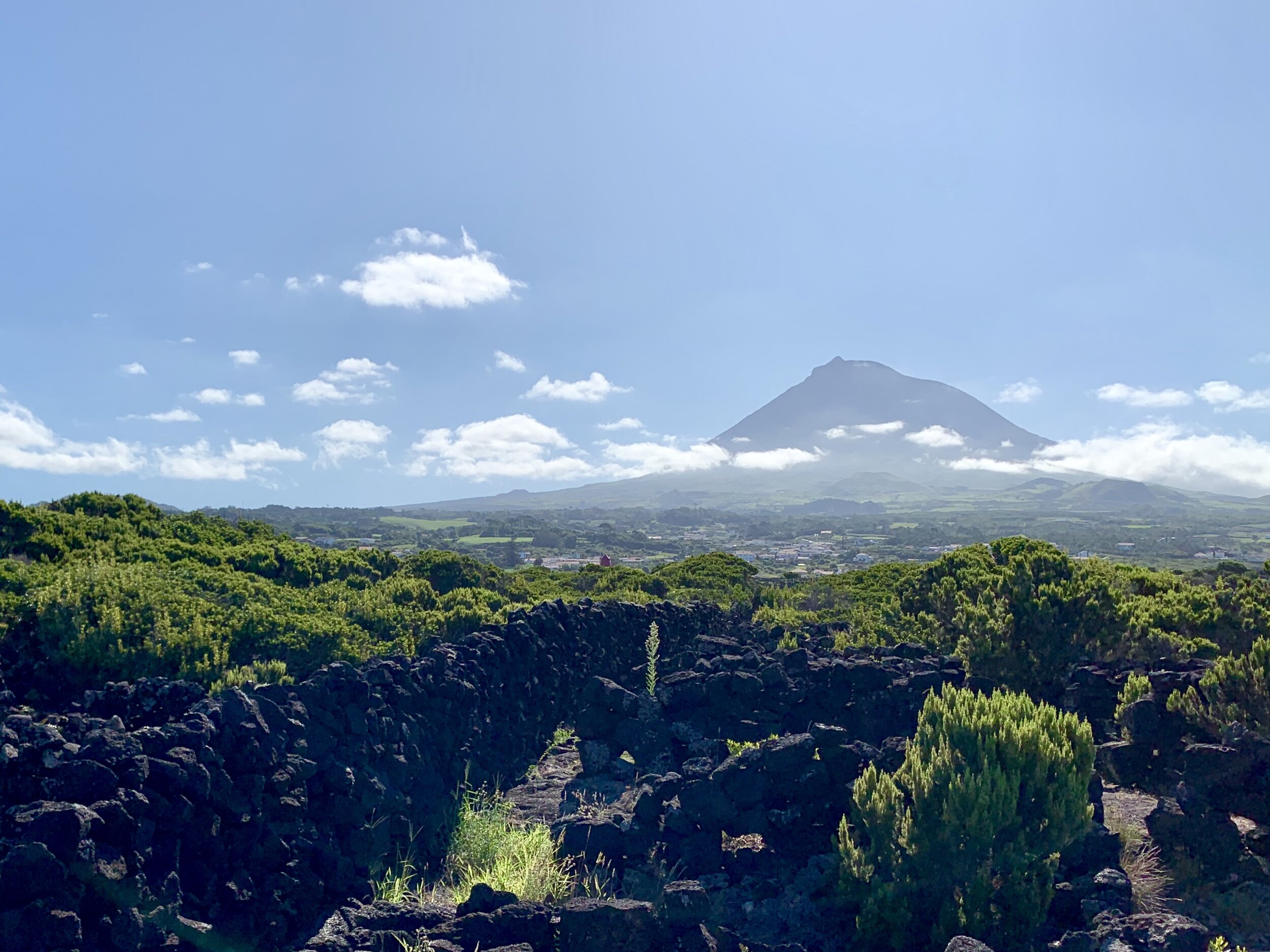In a recent op-ed in the New York Times, Martin Scorsese writes that cinema is “about revelation—aesthetic, emotional and spiritual revelation,” and the best films are the ones that take risks to engage, excite and thrill the audience. I was reminded of his words over lunch last week at Pitiona restaurant in Oaxaca, Mexico, where I ate perhaps my favourite meal of the year. The menu features a wide range of dishes, and I wanted to try every single one. Chef José Manuel Baños combines local ingredients such as tasajo (a cut of beef), grasshopper and amaranth with a flair for unusual, unique combinations that delight the palate. Over a spectacular meal of passionfruit ceviche, guacamole with crickets and tasajo, chickpea mushroom soup, arroz milpa with duck chicharron, and snapper with leek foam, I reflected that Scorsese’s words can be aptly used to describe the culinary arts as well. What more could you want? A spectacular view overlooking the baroque, green-hued Santo Domingo church. Yes, there is that, too.
Passionfruit ceviche masterpiece at Pitiona restaurant
Pitiona restaurant, Oaxaca
Street scene in Oaxaca
Hot chocolate at Mayordomo
We ate another memorable meal at Alfonsina (cash only, reservations required), on the outskirts of Oaxaca city, located by a courtyard the owner-chef shares with his neighbours. Five courses (including a dessert course) are served at a communal table. Among the dishes we were treated to were a flavourful corvina ceviche in a sesame-based sauce, and, later, the same fish cooked in a spicy mole sauce. We walked off lunch around the Zócalo, Oaxaca’s main square, over which the Cathedral prominently soars, and checked out local arts and crafts in the nearby markets. The Zócalo is also a great spot for people watching while sipping on a local hot chocolate at Mayordomo (get the one with no added sugar with milk as a base), which you can also bring home with you.
Mitla
Stonework details at Mitla
Monte Albán
Textile museum in Oaxaca
When not eating, Oaxaca’s vibrant culture and history will easily fill up several days, if not weeks. Don’t miss the aforementioned Santo Domingo church, and the Textile Museum was well worth a stop. Skippable is the small botanical garden, which forces you on a painfully slow, two-hour tour to view the resident plants. We particularly enjoyed contrasting the neighbouring Zapotec sites of Mitla and Monte Albán. The former is small, easily seen in the span of an hour, and features intricate stonework that does not use any mortar. It is impressive how well-preserved many of the structures are. Monte Albán, on the other hand, is a sprawling site, less focused on the details of the stonework and more so on the layout and community that once thrived there. Wandering among the temples, some dating as far back as 2,500 years ago, you sense how small our presence is in the wider span of history. What will human civilisation be like 2,500 years hence? We pondered this and other questions over drinks at Selva, a newly opened mezcal-focused cocktail bar, back in the city. The vibe is jungle chic, the staff are incredibly friendly, and the drinks were so flavourful that one quickly turned into three.
Hierve el Agua
Hierve el Agua pools
Another pool at Hierve el Agua
One of the most stunning sites in the area is made by nature rather than humans: Hierve el Agua, a set of calcified waterfalls and small, vibrantly coloured pools in various hues of green, yellow and blue. The formations are deposits of calcium carbonate and other minerals that remain from previous waterfalls, a similar process to the creation of stalactites in caves. We arrived when the site opened and were lucky enough to have it largely to ourselves for about 45 minutes, during which we staged a photoshoot of Instagram-worthy calibre. Best of all, you can take a dip in the pools, refreshing when outdoor temperatures climb quickly with the exposed sun. Should you want to stay in the area (it’s about a 2 hour drive back to Oaxaca), I highly recommend our Airbnb in Mitla (walking distance to the ruins). It’s run by a young family and features a large pool and patio, a cactus garden, a vinyl record player (and records), striking sunsets, and spectacular stargazing, at roughly $60 USD/night. Our only regret was not staying longer.
Our Airbnb in Mitla
Playa Zipolite
For those that have more time, I’d recommend renting a car to travel further afield. We enjoyed the curvy mountain road between Oaxaca and Puerto Ángel, which climbs and climbs through the mountains, giving you stunning views over the surrounding range. We also passed through the town of San José del Pacifico, known among tourists for its temazcal rituals (basically a mud sweat lodge) featuring locally picked magic mushrooms (the season runs from June to September). Once you hit the coast, you’ll be rewarded with long stretches of beach featuring nudists (at Playa Zipolite) or surfers (at Mazunte or Puerto Escondido). I’d recommend lingering (one-way car rentals are offered by Puerto-Escondido based U-car) to sink into the slower pace of life here. We had a fantastic dinner at the Italian-run Bacco, featuring homemade pastas and fresh, locally-sourced toppings for pizzas, fish and meats. At night, should you visit around the time of a full moon, which we luckily did, you’ll see bioluminescence in the ocean as you watch the waves crash on the beach. It’s the perfect end—or beginning—to a spiritual and cultural journey through this most fascinating of Mexican states.
One of hundreds of striking courtyards in Oaxaca





























































